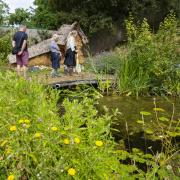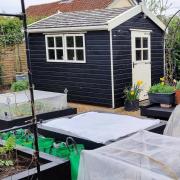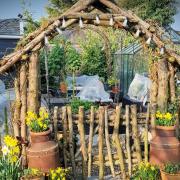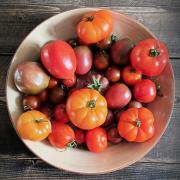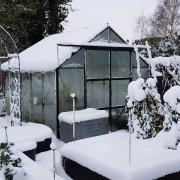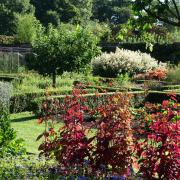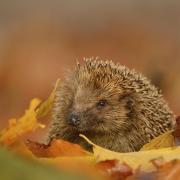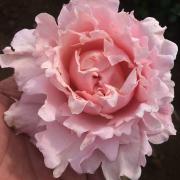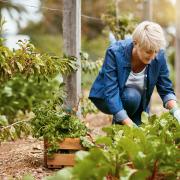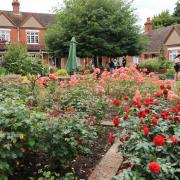Gardening writer Marion Welham tells how she creates borders in her sandy-soil Suffolk garden for year-round colour and interest

Whenever a new plant catches my eye, the first thing I consider is will it like my soil and therefore grow healthily? The second is will it attract bees and other pollinators? And the third is. . . will it die gracefully?
Since my soil is light, veering on pure sand in places, I opt for drought tolerant varieties and those that like free drainage, unless it’s something I absolutely can’t resist. Being a great believer in the saying ‘A pound on the plot, a penny on the plant’, I aim to add as much organic matter as possible, much of it from our own compost heap, but it’s a constant demand as the soil is always hungry.
Bright perennials that are at their best later in the season do well in our sandy soil near the north Suffolk coast. I plant them in a wide border that’s north facing but wide open to the sun. After the tulips have had their fling, the first plants to flower are the orange geums, blue cornflowers and alliums. It doesn’t sound much but May is also the time of year when everything else in the garden is in full swing which is why I focus on later flowerers in the big border to enjoy when the hawthorn, cherries, viburnum and rambling roses have gone over .
In June, the border is resplendent with helenium, monarda and alstroemeria interspersed with field and opium poppies which I leave to self-seed where they will. Geums and cornflowers are still thriving, the blue salvias are at their best and the early kniphofia is making a bold statement at the back.

Brick red lupins ‘My Castle’ and ‘The Pages’, both great doers, went on from May until November last year.
In July, large clumps of helenium begin to flower, notably ‘Sahin’s Early Flowerer’ and the newer varieties ‘Mardi Gras’ and ‘Ruby Tuesday’. The flourescent blue racemes of the huge and eccentric Veronicastrum virginicum ‘Fascination’ or Culver’s Root is at its best. I say eccentric because this variety has a wonderfully unpredictable abnormality (confusingly called fasciation) that causes the tips of the flower spikes to widen and flatten out in the most amusing way.
With us throughout the summer is the tall, self-seeding and vivid purple Verbena bonariensis which will go on until October most years and the ground-covering magenta Geranium sanguineum.
Californian poppies, grown from seed, fill any gaps in July and, by the end of the month, we have a river of yellow rudbeckia running through.

August is an absolute riot of colour with bright orange spears of Kniphofia ‘Alcatraz’ poking through the Stipa gigantea grass and Echinacea emerging among the helenium. Crocrosmia – of which my favourite is the diminutive but perfectly-formed ‘Queen Alexandra’– has managed to flower before being shaded by more vigorous plants and the cool blue of Agapanthus Headbourne hybrids contrasts with the hot August colours.
The electric blue flowers of the hardy plumbago Ceratostigma plumbaginoides are coming through. Goodness what a name to be lumbered with.
Discover this beautiful Suffolk garden created by designer Julianne Fernandez

In September the colour is still dazzles with Sedums ‘Red Cauli’ and ‘Matrona’ on show and the great sunflower bush of Helianthus ‘Lemon Queen’ attracting bees en masse as other flowers such as monarda develop their round and spiky seedheads. The annual Cosmos bipinnatus, grown from seed is flowering profusely and will carry on for weeks as will the orange Dahlia ‘David Howard’, bred by the renowned Suffolk nurseryman who sadly died last December.
October is a glorious month when the colours have mellowed but with definite highlights such as the airy blue Aster x frikartii ‘Monch’ and the stunning Aster ericoides ‘Blue Wonder’ making a striking contrast to ‘Lemon Queen’. Clumps of bergenia have brand new green and crimson shiny leaves in readiness for flowering next spring and the foliage on the hardy plumbago has turned a glorious red bronze.
Pennisetum orientale, the oriental fountain grass has lovely fluffy panicles and other grasses such as Calamagrostis x acutiflora ‘Karl Foerster’, the feather reed grass, are magnificent in shades of rosy pink and amber. The leaves of the veronicastrum have turned a soft yellow against deep burgundy seed heads and lupins remarkably still linger.

If you have grasses combined with ornamental seedheads on plants such as monarda, helenium, phlomis and sedum – all of which die gracefully – you will still have colour and structure in November. And you can’t beat the sight of them, ghostlike, on a frosty December morning.
Marion’s GardenEast blog is at gardeneast.blog/author/marionwelham

Find more Suffolk people and places by joining our Facebook group





